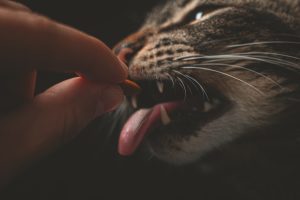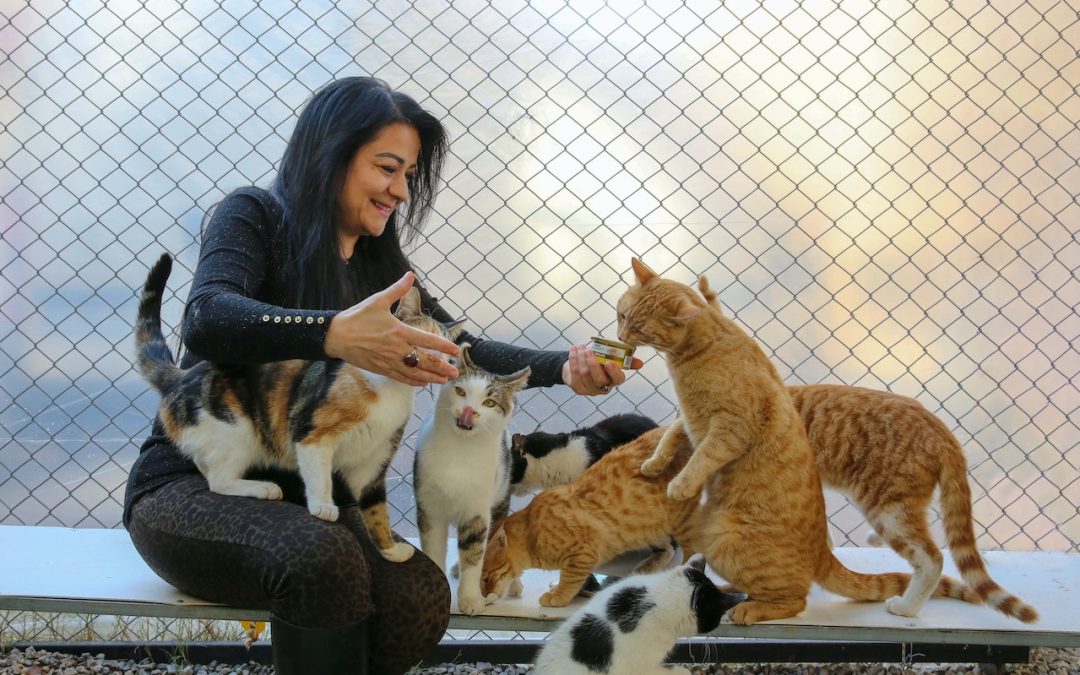How to Choose the Right Commercial Cat Food
Pets are our loyal companions, and as pet parents, we want to give them the best life possible. One of the most crucial ways to show our love for our feline friends is by providing them with a nutritionally balanced diet. Feeding your cat the right food can lead to a longer, healthier, and happier life. This article is here to help you choose the right commercial cat food for your furry friend. We will provide practical advice on understanding the nutritional needs of cats. Discuss types of commercial cat food, read the label, and ingredients to avoid, choose a brand, and switch cat food. By the end of this article, you’ll have all the tools you need to choose the right commercial cat food for your pet. So, let’s get started!
Understanding the Nutritional Needs of Cats

Although treats may be yummy, they probably don’t have all the nutrients your cat needs.
Understanding the nutritional needs of cats is essential if we want to improve their lives and fix our mistakes. And a cat’s digestive system is more complicated than we might think. Therefore, a poor diet can lead to various health issues, including obesity, dental problems, and gastrointestinal disorders.
To ensure we keep all of these issues at bay, there are some things we need to be aware of. Firstly, cats are obligate carnivores. This means they require a diet high in animal protein to meet their nutritional needs. In addition to protein, cats also need the following nutrients in their diet:
- Essential amino acids
- Vitamins A, D, E, and K
- Minerals such as calcium, phosphorus, and magnesium
- Fatty acids, including omega-3 and omega-6
It is important to note that cats’ nutritional needs change as they age. Kittens, for example, require a diet high in protein and fat to support their growth and development. Adult cats need a diet that maintains their body weight and supports their overall health. To sustain their maturing bodies, senior cats may require a diet that is lower in calories and contains more fiber. Therefore, you should change your cat’s diet throughout different stages of its life.
Luckily, a lot of these nutrients are easy to come by. Some natural sources of key nutrients for cats include:
- Animal-based protein sources such as chicken, turkey, fish, and lamb
- Organ meats like liver, kidney, and heart
- Vegetables such as spinach, carrots, and peas
- Fruits such as blueberries and cranberries
- Omega-3 fatty acids found in flaxseed or fish oils
In later sections, this knowledge will surely come in handy.
Types of Commercial Cat Food
If you want to choose the right commercial cat food, the multitude of types and brands out there do not make this choice any easier. Don’t worry; we’ve all been there. However, understanding the different types of cat food available can make the decision easier.
There are three main kinds of commercial cat food:
- Dry cat food: This type of food is convenient, has a longer shelf life, and is often more affordable than wet food. Dry food also helps to keep a cat’s teeth clean by reducing plaque and tartar buildup. However, it is often less palatable and can lead to dehydration if your cat doesn’t drink enough water.
- Wet cat food: Wet food is high in moisture and can help to keep your cat hydrated. It is also more palatable than dry food and comes in a range of flavors and textures. But, compared to dry food, wet food might be more expensive and expire more quickly.
- Semi-moist cat food: This type of food is a cross between dry and wet food and often comes in a pouch or sachet. It is highly palatable but can be high in sugar and salt, which is not ideal for a cat’s health.
A healthy mix of all of these different types of foods is ideal.
To choose the right type of food for your cat, it’s important to consider their individual needs and preferences. Is your cat young or old? How about its activity level? Other circumstances may also affect the diet you choose for it. For example, if you’re moving with pets across state lines, your cat may experience stress and anxiety, which can impact its appetite. No matter how well you may think it went, when you safely reach your new home, be sure to provide your cats with extra comfort. To do so, you may need to switch their diet to wet food or add some tasty treats to their food. However, if you still feel lost, your cat’s veterinarian can also provide advice on the right type of food for your pet.
Reading Cat Food Label

If you are unsure of certain ingredients on the label, research them to choose the right commercial cat food for your cat.
Reading the label on commercial cat food is crucial to ensuring that your cat receives the right balance of nutrients for their individual needs.
Here are some tips on how to read the label:
- Look at the ingredients list: Understanding it is important because it tells you what is in the food. Look for whole ingredients like chicken or fish rather than by-products or fillers. This is important because whole ingredients provide more nutritional value for your cat.
- Check the guaranteed analysis: The guaranteed analysis lists the minimum and maximum levels of key nutrients, such as protein and fat. This information helps you to compare different brands and determine which food is best for your cat’s needs.
- Interpret feeding instructions: The instructions on the label provide guidance on recommended portion sizes and feeding frequency. Following these instructions is vital to prevent overfeeding or underfeeding your cat.
- Look for additional information: While not always listed on the label, additional information such as the manufacturing process and quality control measures can give you a better idea of the quality of the cat food.
Cat Food Ingredients to Avoid
When choosing the right commercial cat food, it’s important to understand which ingredients to avoid. Some of the most common ingredients to watch out for include fillers like corn, wheat, and soy. These will not benefit your cat and are just used to make your cat feel full. And while this food may be cheaper, it does not provide the same nutritional value as ones with whole protein sources like meat, fish, and poultry. Furthermore, avoid food with many by-products, artificial preservatives, and added sugar.
Instead of these potentially harmful ingredients, look for cat food that contains high-quality protein sources, healthy fats, and essential vitamins and minerals. Some alternative ingredients that can provide similar nutritional benefits without negative side effects include sweet potatoes, peas, and fruits like blueberries and cranberries. If your cat has a history of food sensitivities or allergies, you may want to try a limited-ingredient diet that can help you identify and eliminate potential allergens. Consult with your veterinarian to determine the best course of action for your cat’s individual needs.




